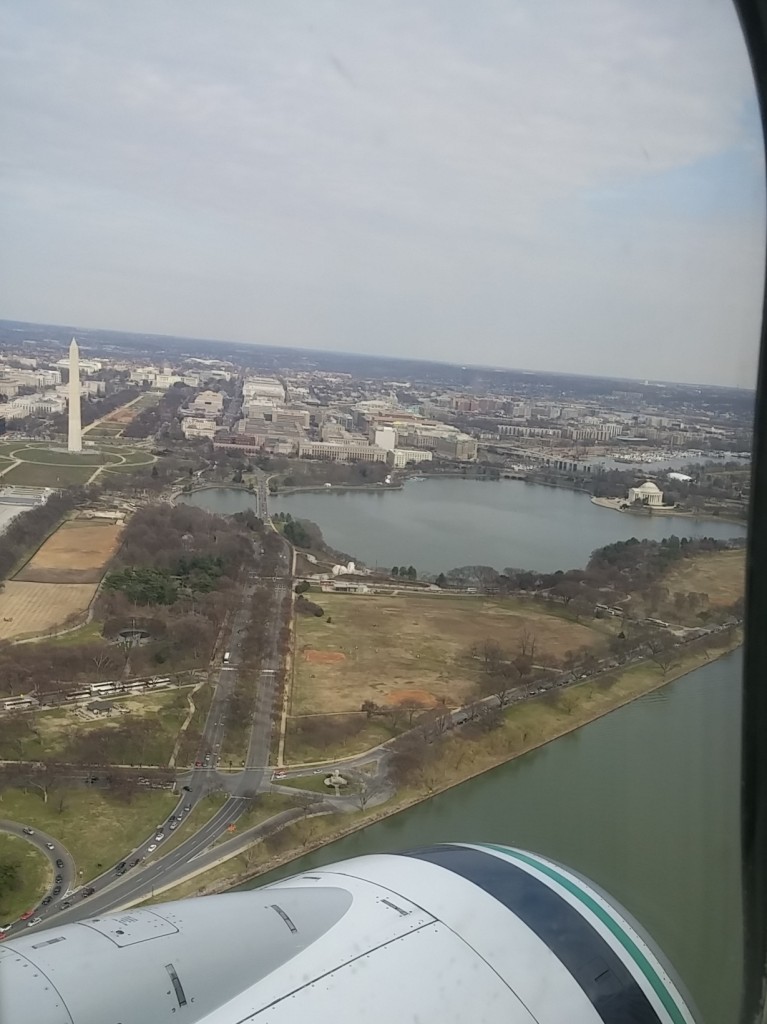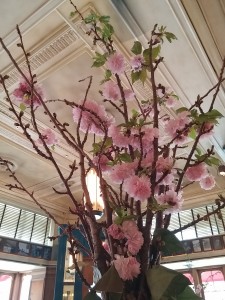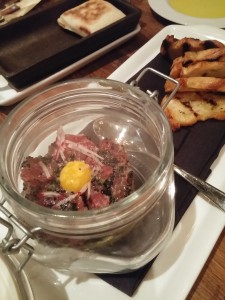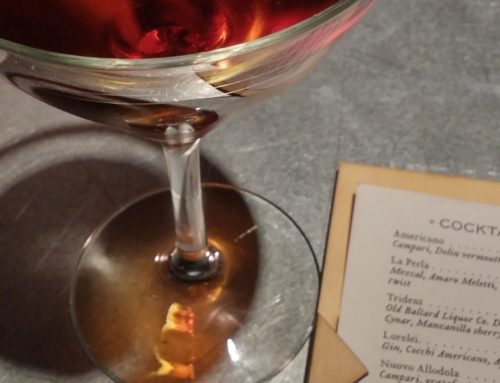For over two decades, about this time each year I’ve packed up for a trip to some North American city for a conference that has been a big part of my career path since the days when I was still trying to figure out where that path might lead me. I happen to work in the world of food, maybe you’re in real estate or telecommunications or marketing. Most disciplines have similar annual gatherings for professionals that I can only hope are as inspiring and fulfilling as I find this meeting of the International Association of Culinary Professionals to be. It’s a yearly master class, summer camp, feast-fest, networking blitz, mentoring (sometimes therapy) session and cocktail party all rolled into one, exactly the shot in the arm I need on an annual basis.
This year’s conference wrapped up last week in Washington D.C., a city I was really happy to get back to. My husband and I have enjoyed a few great vacations there in the past five years, I’d gotten a lot of the basic destinations checked off the list previously. Though I did squeeze in a quick visit to the National Archives Museum (for a peek at their current “Spirited Republic: Alcohol in American History” exhibit) and Hirshhorn Museum (because you can’t go wrong with modern art in my book) before flying out my last day in town.
With sightseeing sidelined, I had all my energy to focus on the conference agenda and time with colleagues and friends, it was glorious. Here are some highlights of the new information and compelling/motivating/inspiring ideas I came home with.
- There were lots of great quotes and stories from our first keynote presenter, José Andrés, but this one (in the context of opening a new restaurant, but it could apply broadly to culinary endeavors) stuck with me most: “When you start first thinking about money, you won’t be feeding people right.”
- A trend panel busting myths about current cooking and eating habits (recap: less doom & gloom than we might think) gave us attendees lots of food for thought, these are some of the high points for me: food remains a
marker of identity for many people, there’s pride associated with passing down food traditions; attention is shifting away from dieting and more towards healthy eating; and much as I like to think food is gender-inclusive, women very much lead the charge regarding shopping and eating habits (which both men on the panel agreed to without reservation).
- The second keynote with three National Geographic representatives discussing the magazine’s Future of Food initiative went from depressing (food waste stats, accessibility issues) to inspiring (rise of agriculture in impoverished regions, new advances in crop management), almost head-spinning but wonderful. The conversation was punctuated by amazing photographs from Jim Richardson, images ranging from lush fields in Eastern Washington (he called the Palouse the most idyllic agriculture landscape he’d seen) to determined farmers making the most of hardscrabble conditions in Africa. With lots of fascinating discussion to draw from, my strongest take-aways had to do with waste issues: only about 55% of what’s grown is consumed by people (the rest subject to waste in the field, in the stores or in our own kitchens among other sidetracks); farmers think retailers are too fussy, expecting every piece of produce to be without any blemish (which brought up the idea of bargain-bins at stores, where consumers could get a deal rather than see the blemished food go to waste), and “sell by” and “use by” dates on commercial products do more to encourage waste than serve the consumer.
- I’ve written many many hundreds of recipes over the years, but still very much enjoyed the How to Write Better Recipes session. Much of it was simply reinforcing in my own mind approaches I already take with recipes: that “caveman style” (i.e. ‘put flour in bowl, stir’) is to be avoided; that it’s best to give a when-done sensory descriptor first, then list the time; that recipe introductions are a great tool for luring in the reader and provide teaching moments (serving ideas, info on unusual ingredients, etc.). What I found most refreshing about this session was how often the two presenters (both from Everyday with Rachael Ray) said of a style point that is can be this or it can be that, either is correct, just pick one and be consistent. Style guidelines can and should only go so far, there still should be room for personal style and individual character to be represented. It’s consistency that is most important. (I feel a bigger discussion on this topic brewing, but will save that for a future post!)
- Another practical craft-of-writing session was lead by Jim Shahin (Washington Post columnist and barbecue expert), focused on writing for niche markets. I’ve been contemplating a concentrated effort to focus more work on the subject of seafood. I spent the first six-plus years of my professional life, back in the 1990s, as
editor at Simply Seafood magazine. Since then I’ve written cookbooks about crab, salmon and, to be released early 2016, oysters. And just working in the Northwest means seafood comes up frequently in work projects and my own personal food adventures. While I’m not yet certain I’m prepared to go full-bore on seafood, it was encouraging to hear his contention that niche writing should be liberating, not constraining. He reinforced it with a reminder that “food is not just about food,” that covering a food subject from all possible facets allows us to delve into travel, tools, health, business, science, trends, technology, personality profiles, history…..a never-ending array of opportunities that’s pretty compelling.
It seems pretty fitting that among the last things I wrote down in my conference notebook was “DON’T OVERTHINK!!!!!” Just like that, all caps, lots of exclamation marks. The few days were, as usual, packed with new motivations, inspirations from colleagues, hearing about cool projects that spur new ideas for myself, facts and figures that make me think differently about the world around me and how I want to move–and work–within it. But then I get home, get back in routine, think-think-think, make lists and plans, then shuffle them around on my desk until the power of their promise has faded. It can be a hard cycle to break, turning circumstantial inspiration into true and lasting action.
The unique dynamo that is José Andrés admitted to us that he hadn’t really sketched out a specific plan for his keynote presentation, which proved that he’s clearly a naturally gifted presenter and storyteller, plus that he was speaking from the heart, truly authentic. And it amplified the value of what he had to say. He started with a wonderful story of making paella with his family, noting that what’s in the pan is nothing without the fire below to fuel its cooking (ergo: find your fire and keep it going). And he wrapped up with the reflection that–after hearing our umpteenth round of applause–that clapping in agreement is one thing, but what’s going to make the world better is getting out of our chairs and doing something.
Fire and action. Literal, figurative, metaphoric, however you take those two words, they’re potent references to movement, development, change, inspiration. I’ll be holding them close and drawing from them to keep the energy from that conference alive in the months to come.





Cynthia, I’ve always wanted to attend an IACP conference. Perhaps next year. Through your summary, I’ve already learned from it! I write recipes quite well, but I don’t often include a when-done sensory descriptor first, then the time. I’m going to watch that.